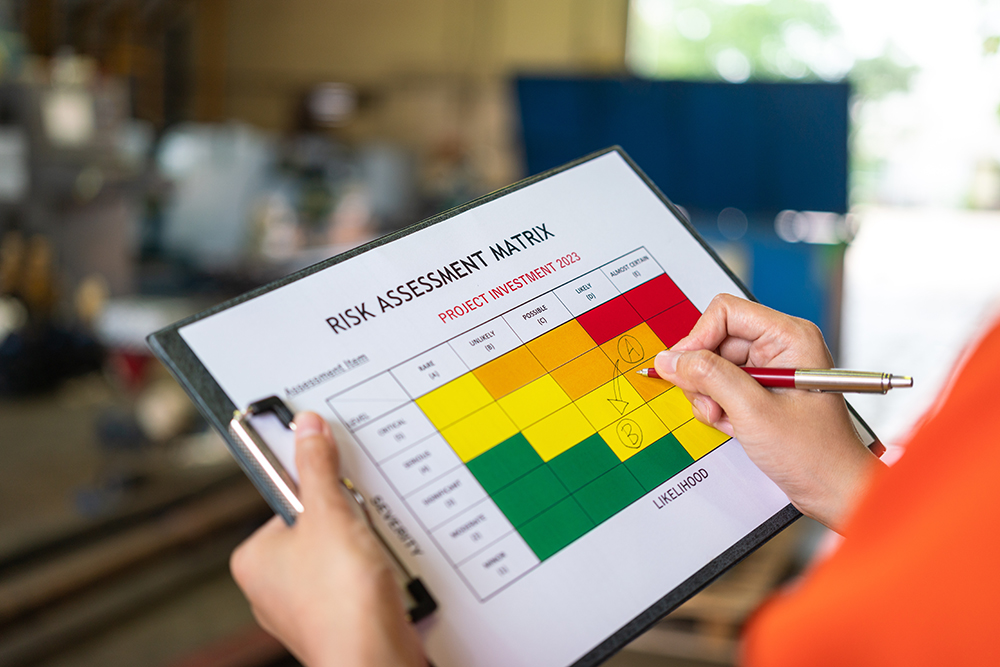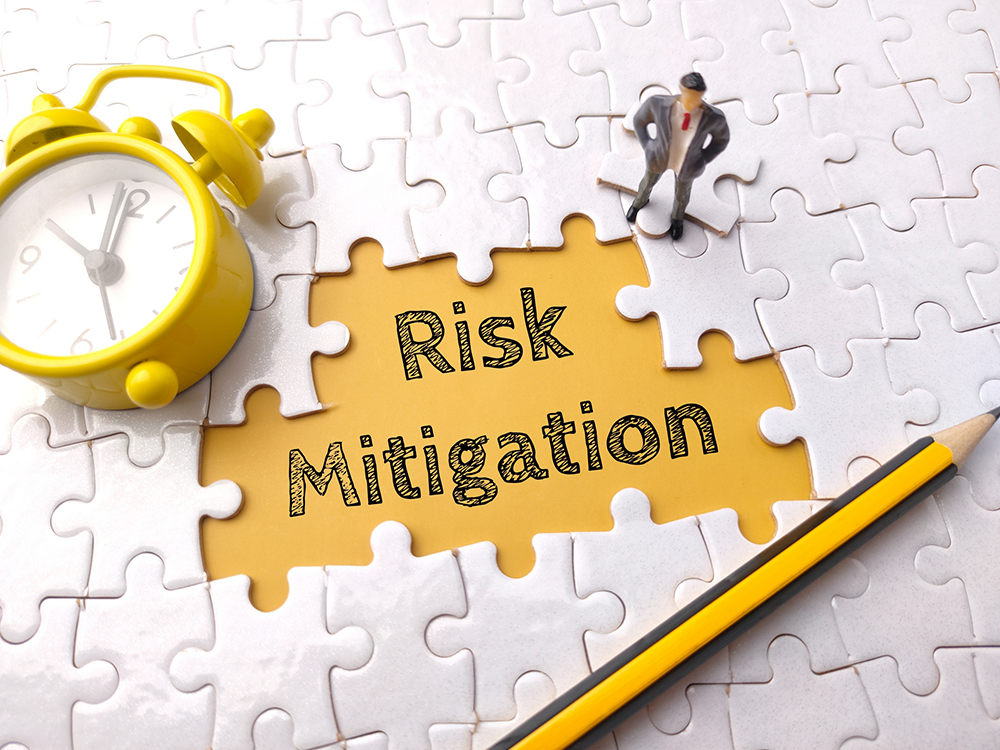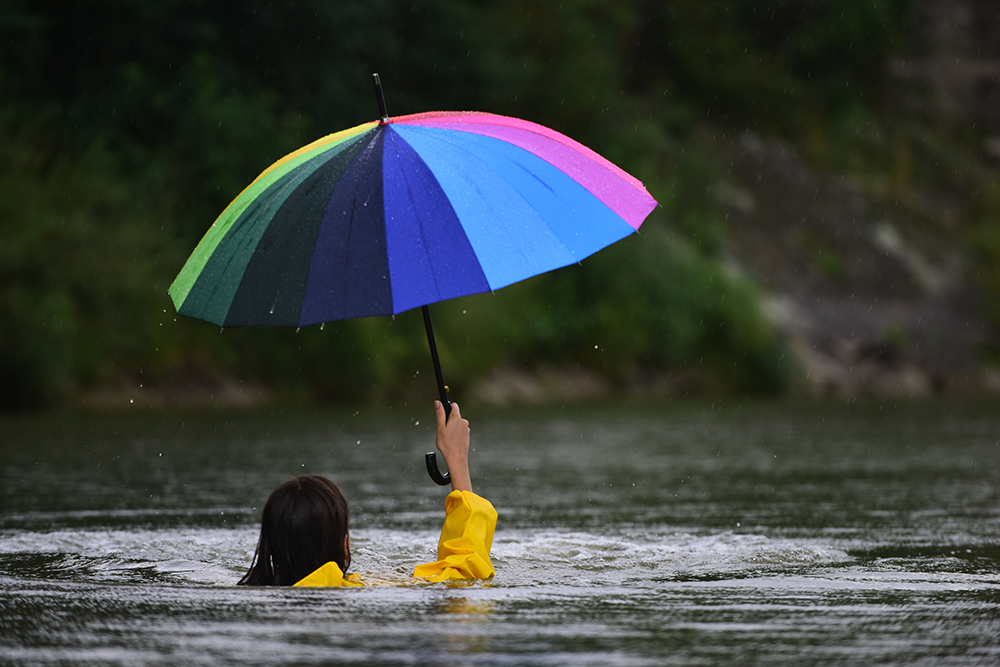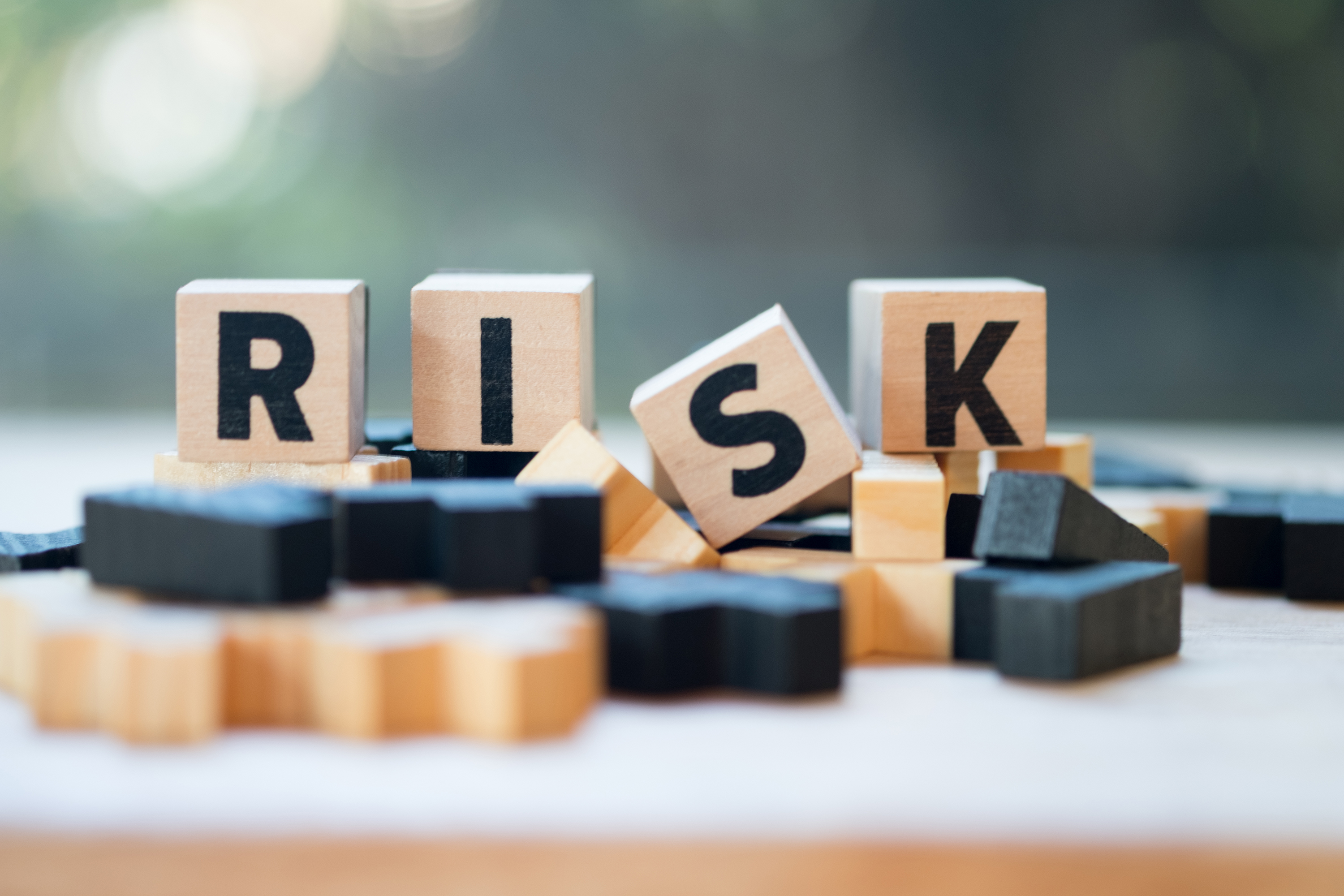Risk management in hospitality management involves identifying, assessing, and mitigating potential risks that could negatively impact a hospitality organisation. In an industry that deals with a variety of uncertainties, from health and safety concerns to financial fluctuations and customer satisfaction, effective risk management is crucial for ensuring smooth operations and long-term success. Key points include understanding the different types of risks—such as operational, financial, legal, and reputational risks—developing strategies to manage these risks, and implementing risk mitigation plans. Additionally, regular monitoring and reviewing of risks ensure that organisations remain adaptable and resilient in a constantly changing environment. By mastering risk management, organisations will be able to safeguard their hospitality business, protect their guests and staff, and sustain their organisation's reputation and profitability.
The first, and most critical, step in the risk management process is risk identification. This involves systematically recognising potential risks which could affect a hospitality organisation’s operations, reputation or financial stability. Unforeseen circumstances arise frequently in the dynamic environment of the hospitality industry, so proactive risk identification can help managers to prepare for and address issues before they get out of hand.
Types of Risks in Hospitality
- Operational Risks: These include anything that could disrupt daily operations, such as equipment failure, supply chain issues, or staff shortages. For instance, if a key kitchen appliance at Pauanui Ocean Resort breaks down during peak season, it could lead to delays in service, negatively impacting guest satisfaction
- Financial Risks: These relate to factors that can affect the financial health of the organisation, such as unexpected costs, fluctuating demand, or poor financial management. At Pauanui Ocean Resort, a sudden decline in tourist numbers due to external factors like a natural disaster could result in decreased revenue, threatening the resort's financial viability.
- Health and Safety Risks: Hospitality organisations must ensure the safety of both guests and staff. This includes maintaining high standards of food safety, fire safety, and hygiene. For example, Pauanui Ocean Resort must regularly assess its kitchen operations to ensure compliance with health regulations and avoid any incidents of food poisoning that could harm guests and damage the resort's reputation.
- Legal and Regulatory Risks: Compliance with laws and regulations is essential for any hospitality business. Failure to adhere to these can result in legal penalties or closure. Pauanui Ocean Resort must ensure that all its operations, from employee contracts to environmental regulations, comply with New Zealand laws to avoid costly legal challenges.
- Reputational Risks: The reputation of a hospitality organisation is vital for its success. Negative reviews, poor customer service, or unethical practices can quickly damage an organisation’s image. For example, if Pauanui Ocean Resort were to experience a high-profile incident involving dissatisfied guests, it could lead to negative publicity that harms future bookings.
Risk Identification Techniques
To effectively identify risks, hospitality managers use various techniques:
- Brainstorming and Workshops: Involving staff from different departments can help identify risks from multiple perspectives. At Pauanui Ocean Resort, regular risk identification workshops could be held with the management team, housekeeping, kitchen staff, and front desk employees to uncover potential risks across the organisation.
- Checklists: Using risk identification checklists based on industry standards ensures that no critical risks are overlooked. For example, a checklist could include verifying that fire safety equipment is functional, or that food storage facilities meet health standards.
- SWOT Analysis: This involves examining the organisation’s strengths, weaknesses, opportunities, and threats to identify risks. At Pauanui Ocean Resort, a SWOT analysis might reveal that while the resort’s beachfront location is a strength, it also poses a risk during extreme weather events.
- Incident Reports: Reviewing past incidents can provide insights into recurring risks or previously unidentified hazards. If Pauanui Ocean Resort has experienced repeated guest complaints about noise levels in certain rooms, this could highlight a risk that needs addressing.
- Risk Assessments and Audits: Conducting formal risk assessments and audits helps identify and evaluate potential risks systematically. For instance, an external audit of Pauanui Ocean Resort’s financial practices might uncover risks related to cash flow management or over-reliance on seasonal income.
Case Study
Risk Identification at Pauanui Ocean Resort

Consider a scenario where Pauanui Ocean Resort identifies a risk related to its new beachfront bar, part of the resort's recent expansion to enhance guest services. The bar's proximity to the beach increases the risk of sand and water damage to equipment, as well as the potential for accidents involving guests near the water after consuming alcohol. By identifying these risks early, the resort can implement measures such as installing protective barriers, increasing staff training on guest safety, and enhancing maintenance protocols for the bar equipment.
Video Title: What risk identification techniques are available and which is the best one?
Watch Time: 9: 50 minutes
Video Summary: Before we can manage risks, we first have to identify them. But how? There are many different techniques. Dr David Hillson explains how to choose between them.
Pre-Watch Question: What are the risks have you already identified related to the development of your new hospitality product or service?
Source: RiskDoctorVideo
ACTIVITY: Post Watch Task
Think about the A,B,C of risk analysis in this video and how it applies to your hospitality product or service.
- Present risk analysis: Which Assumptions have you made?
- Future risk analysis - Have you Brainstormed the risks with your group?
- Past risk analysis – Make a checklist of risks identified from previous experience
Once risks have been identified, the next crucial step in the risk management process is risk assessment. This involves evaluating the identified risks to determine their potential impact and the likelihood of them occurring. By prioritising risks based on these factors, hospitality managers can allocate resources effectively to mitigate the most significant threats to their organisation.
Key Components of Risk Assessment
Risk Analysis
This step involves analysing each identified risk to understand its potential consequences. For example, at Pauanui Ocean Resort, a fire in the kitchen could lead to severe consequences, such as injury to staff, damage to property, and significant disruption to operations. Analysing the severity of these outcomes helps in understanding the urgency of addressing this risk.
Likelihood of Occurrence
Assessing the probability of a risk occurring is essential in determining how much attention it warrants. Some risks, such as minor equipment malfunctions, may be more frequent but have less severe consequences, while others, like a major natural disaster, may be less likely but have catastrophic impacts. For instance, Pauanui Ocean Resort may assess the likelihood of a power outage during peak season and prepare accordingly by investing in backup generators.
Risk Prioritisation
After analysing the potential impact and likelihood of each risk, it is important to prioritise them. This process helps hospitality managers focus on the most critical risks first. Using a risk matrix—a tool that visually represents risks based on their likelihood and impact—can aid in this prioritisation. For example, Pauanui Ocean Resort might rank the risk of a kitchen fire as a higher priority than the risk of a minor slip-and-fall incident in the lobby, due to its potentially greater impact.
Quantitative vs Qualitative Assessment
Risk assessments can be conducted using quantitative methods, which involve numerical data, or qualitative methods, which rely on descriptive information. A quantitative approach at Pauanui Ocean Resort might involve calculating the financial loss associated with a specific risk, while a qualitative approach could involve rating risks as low, medium, or high based on expert judgment.
Risk Appetite and Tolerance
Understanding the organisation's risk appetite—the level of risk it is willing to accept—plays a critical role in risk assessment. Pauanui Ocean Resort might have a low risk tolerance for anything that affects guest safety, meaning that even minor health and safety risks are taken seriously. Conversely, the resort might be more tolerant of financial risks associated with investing in new amenities, seeing them as necessary for long-term growth.
Watch this YouTube playlist from Howlett Health & Safety Services showing a 6-step process to carry out a risk assessment.
Case Study
Risk Assessment at Pauanui Ocean Resort

Consider a situation where Pauanui Ocean Resort is assessing the risk of a data breach affecting its guest reservation system. The resort would analyse the potential consequences, such as loss of sensitive customer information and the resulting damage to its reputation. Although the likelihood of a breach might be moderate, the severe impact on guest trust and the resort's legal obligations would likely prioritise this risk for immediate attention. As a result, the resort might invest in enhanced cybersecurity measures, staff training on data protection, and regular system audits to mitigate this risk.
After identifying and assessing risks, the next step in the risk management process is risk mitigation. Risk mitigation involves developing strategies and actions to reduce the likelihood or impact of potential risks on a hospitality organisation. Effective mitigation ensures that risks are managed proactively, minimising disruption and safeguarding both the organisation’s assets and reputation.
Risk Avoidance
This strategy involves taking steps to completely eliminate a risk. For instance, Pauanui Ocean Resort might decide not to offer certain high-risk activities, such as extreme water sports, to avoid the potential for accidents or liability claims. By avoiding these risks altogether, the resort reduces its exposure to potentially severe consequences.
Risk Reduction
Reducing the likelihood or impact of a risk is a common approach. This can involve implementing safety protocols, investing in maintenance, or enhancing staff training. For example, Pauanui Ocean Resort might reduce the risk of kitchen fires by ensuring that all cooking equipment is regularly inspected and maintained, and that kitchen staff are trained in fire safety procedures. Similarly, improving food handling processes can reduce the risk of foodborne illnesses.
Risk Transfer
Transferring the risk to a third party is another effective mitigation strategy. This is often done through insurance or contracts. Pauanui Ocean Resort could mitigate the financial impact of property damage or guest injury by purchasing comprehensive insurance coverage. Additionally, outsourcing certain services, such as security or maintenance, can transfer the operational risks associated with these tasks to specialised contractors
Risk Acceptance
In some cases, the cost or difficulty of mitigating a risk may lead an organisation to accept the risk. This is often done when the potential impact is low or when mitigation measures are not cost-effective. For example, Pauanui Ocean Resort might accept the risk of occasional bad weather affecting outdoor events, as the impact is manageable and cannot be easily avoided. However, even when accepting a risk, it is important to have contingency plans in place to respond quickly if the risk materialises.
Risk Monitoring and Review
Mitigation is not a one-time action but an ongoing process. Risks evolve, and new risks may emerge over time. Therefore, regular monitoring and review of risk mitigation strategies are essential. Pauanui Ocean Resort might conduct quarterly risk reviews to assess the effectiveness of its mitigation measures and make adjustments as needed. This ensures that the resort remains prepared for new challenges and that existing risks are continually managed.
Case Study
Risk Mitigation at Pauanui Ocean Resort

Consider a scenario where Pauanui Ocean Resort identifies a risk associated with theft from guest rooms. The resort might mitigate this risk by installing additional security cameras, enhancing staff training on security protocols, and providing in-room safes for guests. Additionally, the resort could transfer some of the risk through insurance policies that cover losses due to theft. By combining these mitigation strategies, the resort reduces both the likelihood of theft occurring and the financial impact if it does happen.
Contingency planning is an essential component of risk management, focusing on preparing for and responding to potential crises or unexpected events that could disrupt a hospitality organisation's operations. Unlike risk mitigation, which seeks to reduce the likelihood or impact of risks, contingency planning is about ensuring the organisation can continue to function effectively, or recover quickly, if a risk materialises. This proactive approach is crucial for maintaining business continuity and protecting both guests and staff in the face of unforeseen challenges.
Importance of Flexibility
While contingency plans are designed to be comprehensive, it is important to recognise that not all situations can be predicted in advance. Therefore, contingency plans should be flexible enough to adapt to unexpected developments. For example, if Pauanui Ocean Resort experiences an unexpected delay in receiving emergency supplies, the contingency plan should include alternative options, such as local sourcing or reallocating existing resources.
- Scenario Planning: Contingency planning begins with identifying possible scenarios that could significantly impact the organisation. These scenarios often stem from the most critical risks identified during the risk assessment phase. For example, Pauanui Ocean Resort might develop contingency plans for scenarios such as a natural disaster, a significant power outage, or a sudden outbreak of illness among guests or staff.
- Response Procedures: A clear set of response procedures should be outlined for each identified scenario. These procedures should include step-by-step actions to be taken immediately after an incident occurs. At Pauanui Ocean Resort, a contingency plan for a cyclone might involve procedures for securing the property, evacuating guests, and coordinating with emergency services. Detailed response plans ensure that all staff know their roles and responsibilities during a crisis.
- Communication Plans: Effective communication is critical in any emergency situation. A contingency plan must include a communication strategy that details how information will be shared with staff, guests, and external stakeholders such as suppliers or emergency services. For example, Pauanui Ocean Resort might establish a communication protocol that includes designated staff responsible for updating guests on the situation, as well as a system for notifying all employees and coordinating their actions
- Resource Allocation: Ensuring that the necessary resources are available to implement contingency plans is vital. This includes having emergency supplies, backup equipment, and financial reserves ready to be deployed. Pauanui Ocean Resort might stockpile essential supplies such as food, water, and medical kits, and ensure that backup generators are in place and regularly maintained to keep critical systems operational during a power outage.
- Training and Drills: Regular training and drills are essential to ensure that all staff are familiar with contingency plans and can execute them effectively under pressure. Pauanui Ocean Resort could organise annual emergency drills, such as fire evacuation or first aid training, to ensure that employees are prepared to respond quickly and efficiently in real-life situations
- Recovery and Continuity: A well-rounded contingency plan should also include strategies for business recovery and continuity after the crisis has passed. This might involve steps to resume normal operations, assess and repair any damage, and provide support to affected staff or guests. For Pauanui Ocean Resort, a post-crisis recovery plan could include financial assessments to determine the cost of repairs, public relations efforts to rebuild the resort’s reputation, and offering support services to staff who may have been traumatised by the event
Case Study
Contingency Planning at Pauanui Ocean Resort

Imagine a situation where Pauanui Ocean Resort is faced with a major flood, an event that could severely disrupt operations and endanger guests. The resort’s contingency plan might include a detailed flood response procedure, starting with the evacuation of guests to higher ground, communication with local emergency services, and securing critical assets. The plan would also cover the immediate aftermath, such as assessing damage, coordinating with insurance providers, and planning for repairs. By having this plan in place, the resort can manage the crisis effectively, minimising harm and ensuring a faster return to normal operations.
H5P here
You’ve reached the end of the learning material for this topic. You should have completed a Risk Management Strategy appropriate to the hospitality product or service you are developing. While you can work on the ideas as a group, you must ensure you have your own version, in your own words which you can use when completing the assessment for this course. Make sure this is completed before moving on to the next steps.
